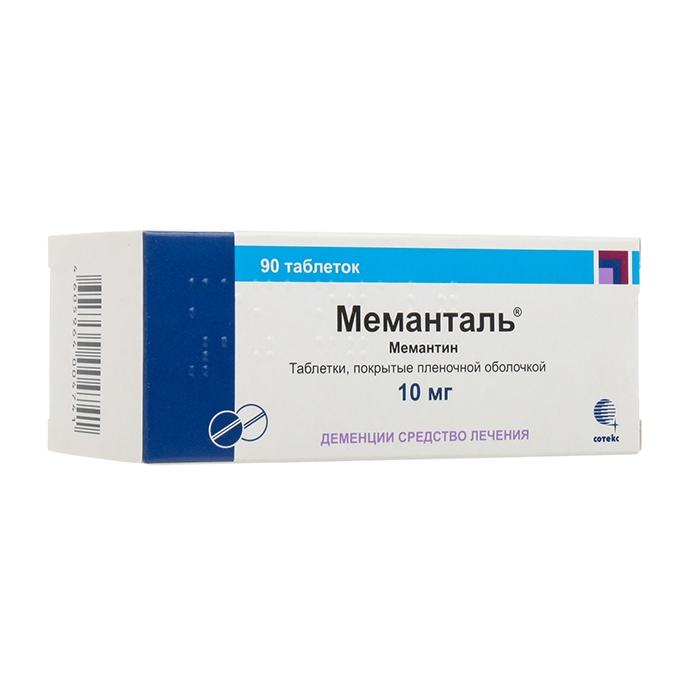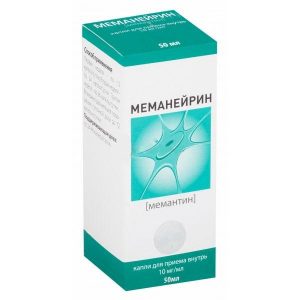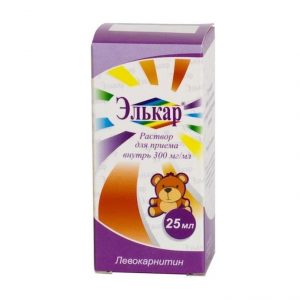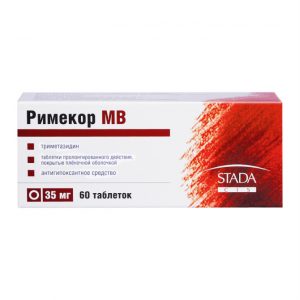Description
Release form
Film-coated tablets
Pharmacological action
It has a nootropic, cerebrovasodilating, antihypoxic and still stimulating effect. The derivative of adamantane, in chemical structure and pharmacological properties, is close to amantadine. It blocks glutamate N-methyl-D-aspartate receptors (NMDA receptors) (including in the substantia nigra), thereby reducing the excessive stimulating effect of cortical glutamate neurons in the nanoostratum, which develops against the background of insufficient dopamine secretion. Reducing the flow of ionized calcium into neurons, reduces the possibility of their destruction. To a greater extent affects stiffness (rigidity and bradykinesia). Improves weakened memory, concentration, reduces fatigue and symptoms of depression, reduces spasticity caused by diseases and brain damage.
Indications
– moderate to severe Alzheimer’s type dementia.
Pregnancy and lactation
There is no data on the use of memantine in pregnant women. Memantine should only be used if the expected benefit to the mother outweighs the potential risk to the fetus.
There is no data on the penetration of memantine into breast milk. Taking into account the lipophilic structure of the active substance of the drug, it can be assumed that memantine can pass into breast milk, and therefore it is recommended to stop breastfeeding while taking
Special instructions
Caution is prescribed for patients with thyrotoxicosis, epilepsy, seizures (including a history) of the simultaneous use of NMDA receptor antagonists (amantadine, ketamine, dextromethorphan). the presence of factors that increase the pH of urine (a sharp change in diet, heavy intake of alkaline gastric buffers), severe urinary tract infections, a history of myocardial infarction, heart failure III-IV functional class (NYHA classification), uncontrolled arterial hypertension, renal and liver failure.
Impact on the ability to drive vehicles and other mechanisms
Memantine may cause a change in reaction rate, therefore, it is necessary to refrain from potentially dangerous activities that require an increased concentration of attention and speed of psychomotor reactions.
Composition
memantine hydrochloride 10.00 mg
excipients: tablet core – lactose monohydrate 149.75 mg, microcrystalline cellulose 27.10 mg, talc 11.15 mg, colloidal silicon dioxide 1.25 mg, magnesium stearate 0.75 mg shell – Opadry white (lactose monohydrate 2.16 mg, hypromellose 1.68 mg, titanium dioxide 1.56 mg, macrogol-4000 0.60 mg) – 6.00 mg.
Dosage and Administration
Therapy should be carried out under the supervision of a physician with experience in the diagnosis and treatment of dementia in Alzheimer’s disease. Therapy should only be started if the person who provides regular care for the patient monitors the patient’s medication. The diagnosis should be made in accordance with current recommendations.
Tolerance and dose should be regularly evaluated, mainly within three months after initiation of therapy. Then, the clinical efficacy of the drug and the tolerance of therapy should be regularly evaluated in accordance with current clinical guidelines. Maintenance therapy can be continued indefinitely with a therapeutic effect and good tolerance to the drug. The use of the drug should be discontinued if the therapeutic effect is no longer observed or if the patient does not tolerate treatment.
The drug is taken orally, 1 time / day, always at the same time, regardless of the meal. The dosage regimen is set individually. It is recommended to start treatment with the appointment of the minimum effective dose.
Prescribe the drug for 1 week of therapy (days 1-7) at a dose of 5 mg / day, for 2 weeks (days 8-14) – at a dose of 10 mg / day, for 3 weeks ( days 15-21) – at a dose of 15 mg / day, during the 4th week (days 22-28) – at a dose of 20 mg / day. The maximum daily dose of 20 mg.
In patients older than 65 years, as well as in patients with CC 50-80 ml / min, dose adjustment is not required. For patients with moderate renal failure (CC 30-49 ml / min), the daily dose is 10 mg. In the future, with good tolerability of the drug for 7 weeks, the dose can be increased to 20 mg according to the standard scheme.
Tablet Dividing Instructions Place the tablet with its rounded side on a hard surface with the notch facing up. Press the index finger and thumb of one of the hands on the opposite sides of the tablet, continue to apply pressure with your fingers until the tablet breaks into two.
Side effects
The frequency of adverse reactions was classified as follows: very often (? 1/10), often (? 1/100, <1/10). infrequently (? 1/1000, <1/100), rarely (? 1/10 000, <1/1000), very rarely (<1/10 000), the frequency has not been established (currently there are no data on the prevalence of adverse reactions ) Infectious and parasitic diseases: infrequently – fungal infections. From the side of the immune system: often – hypersensitivity to memantine or other components that make up the drug. Mental disorders: infrequently – confusion, hallucinations (mainly in patients with severe Alzheimer’s disease) the frequency is not established – psychotic reactions. From the nervous system: often – headache, drowsiness, dizziness, imbalance infrequently – disturbance of gait: very rarely – convulsions, epileptic seizures. From the side of the heart: infrequently – heart failure, heart defects. From the vessels: often – increase in blood pressure, venous thrombosis and / or thromboembolism. From the respiratory system, chest and mediastinal organs: often – shortness of breath. From the gastrointestinal tract: often – constipation rarely – nausea, vomiting frequency is not established – pancreatitis. From the liver and biliary tract: often – a violation of functional liver samples. Other: infrequently – fatigue, general weakness. In Alzheimer’s disease, depression, suicidal thoughts, and suicide cases have been reported in patients in post-registration studies. In the post-marketing period, the following adverse reactions were reported: agranulocytosis, leukopenia (including neutropenia), pancytopenia, thrombocytopenia, thrombocytopenic purpura, hepatitis, acute renal failure, Stevens-Johnson syndrome. Drug interaction When used simultaneously with levodopa drugs, dopamine receptor antagonists, m-anticholinergic drugs, the effect of the latter can be enhanced. With simultaneous use with barbiturates and antipsychotics, the effect of the latter may be reduced. When used together, it can change (increase or decrease) the effect of dantrolene or baclofen, so the doses of the drugs should be selected individually. Concomitant use with amantadine, ketamine, phenytoin, and dextromethorphan should be avoided because of the increased risk of developing psychosis. Possible increase in plasma concentrations of cimetidine, ranitidine, procainamide, quinidine, quinine and nicotine when taken with memantine. May decrease hydrochlorothiazide levels when used together with memantine. Memantine is able to increase the excretion of hydrochlorothiazide. May increase MHO in patients taking oral anticoagulants (warfarin). Concomitant use with antidepressants, selective serotonin reuptake inhibitors and MAO inhibitors require close monitoring of patients. In vitro, memantine does not inhibit CYP1A2, 2A6, 2C9, 2D6, 2E1, 3A isoenzymes, flavin-containing monoxidase, epoxyhydrolase, or sulfation. Overdose Symptoms: dizziness, tremor, agitation, drowsiness, confusion, agitation, stupor, convulsions, psychosis, aggressiveness, hallucinations, vomiting, unsteady gait, diarrhea. Treatment: gastric lavage, intake of activated carbon, symptomatic therapy. There is no specific antidote. Storage conditions The product should be stored out of reach of children at a temperature not exceeding 25 ° C. Expiration and 3 years Active ingredient Memantine Terms of sale from pharmacies Prescription lekarstvennaja form tablets




